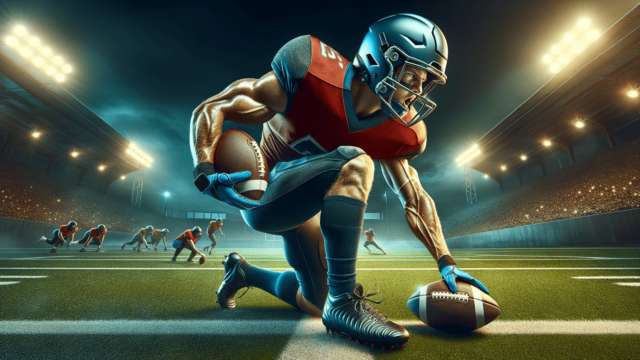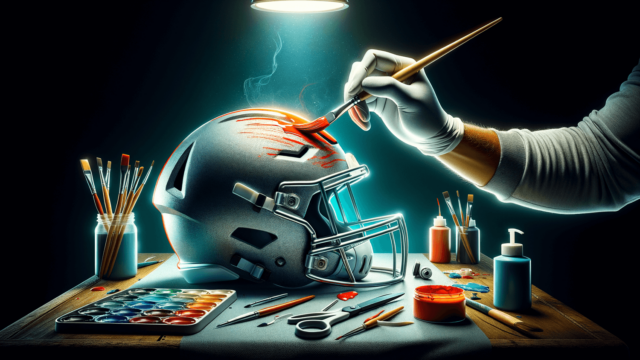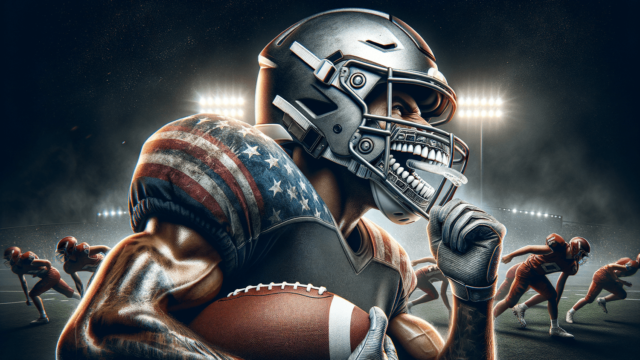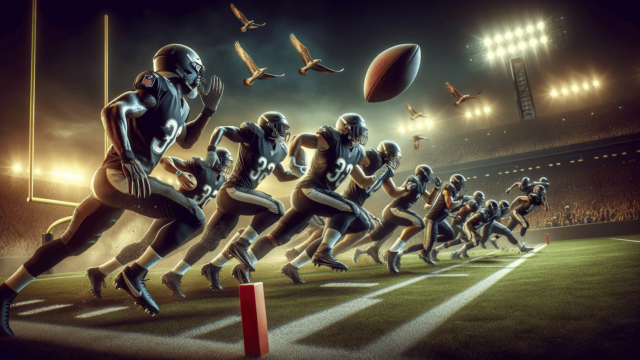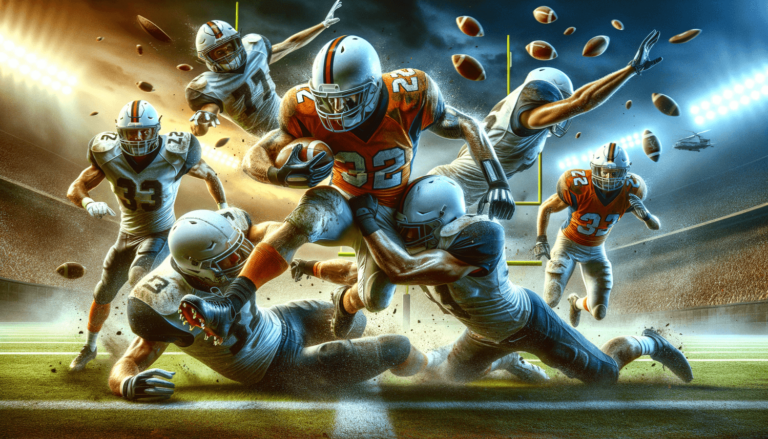
Spearing in football refers to a dangerous and illegal tackling technique where a player leads with the crown of his helmet, making contact with the opponent’s body, particularly the head or neck. This action poses a significant risk of injury for both players, and is strictly penalized by football authorities.
Defining Spearing in Football
Spearing in football is a hazardous and prohibited tackling technique, where a player deliberately leads with the crown (top) of their helmet to make contact with an opponent’s body, mainly targeting the head or neck area. This high-risk tactic not only increases the chances of severe injuries for both players involved but also results in penalties and possible suspensions.
Risks and Dangers of Spearing
The major concern behind spearing is the elevated risk of injury it presents. Players using this tactic face the possibility of spinal injuries, concussions, and other life-altering consequences. The receiving player is susceptible to head, neck, and spinal trauma, as well as potential concussions. The heightened risk has driven football authorities to address and penalize spearing in the game.
Penalties for Spearing
In both professional and amateur leagues, spearing is strictly penalized to discourage players from using this dangerous technique. More often than not, a personal foul penalty is assessed during games when referees identify spearing. Players might also receive additional fines, suspensions, or expulsion, depending on the league’s rules and the severity of the incident.
Preventing Spearing and Promoting Safety
Football governing bodies and coaches prioritize player safety by emphasizing the importance of proper tackling techniques. Through training, players are taught to keep their head up and lead with their shoulder when tackling, minimizing the risk of harmful contact. Establishing these safe practices from an early age ensures that players develop the skills they need to keep themselves and their opponents safe on the field.
Prominent Spearing Incidents
Though efforts have been made to curb spearing in football, a few notable incidents have occurred within both the professional and amateur realms. High-profile cases demonstrate the urgency with which action must be taken to deter such behavior, as the resulting injuries can be significant and career-altering. These incidents serve as cautionary tales and teachable moments for players and coaches alike.
Education and Developing Good Techniques
Educating players about the dangers of spearing and the importance of safer tackling techniques is crucial in minimizing the occurrence of this risky act. Coaches, trainers, and even parents play a significant role in ensuring that players are aware of and practice proper techniques. By equipping individuals with the necessary knowledge and skills, the sports community can continue fostering a safer environment for all involved.
Equipment Advances
Technological advancements in football equipment, such as the development of more protective helmets, are enhancing player safety. While these improvements may not entirely eliminate the risk of injury, they play a vital role in reducing the potential damage from spearing. Continued investment in research and innovation for safer football gear remains a crucial component in the battle against harmful tackling techniques.
Raising Awareness and Advocacy
Increased public awareness of the dangers associated with spearing and other high-risk tactics in football helps contribute to the prevention of such occurrences. Advocacy and awareness campaigns initiated by players, coaches, and organizations encourage players to prioritize safety over aggressive behavior on the field. By working together, the football community can eradicate dangerous techniques like spearing and ultimately create a safer sport for all participants.
Frequently Asked Questions
After learning about spearing in football and the risks associated with the practice, readers may still have some additional questions. The following FAQ addresses common queries related to this hazardous tackling technique and provides succinct, informative answers.
How is spearing different from a helmet-to-helmet hit?
While both spearing and helmet-to-helmet hits involve the helmet, spearing specifically refers to a player leading with the crown of the helmet to make contact with an opponent, often targeting the head or neck. A helmet-to-helmet hit could be accidental or incidental, whereas spearing is typically intentional and more dangerous due to the focused force it generates.
What is the difference between personal fouls, fines, and suspensions in relation to spearing?
Personal fouls are in-game penalties enforced by referees, usually resulting in a loss of yardage for the offending team. Fines are monetary penalties imposed by league authorities after the game, while suspensions entail a temporary ban of the player from participating in future games. The severity of these penalties depends on the league’s rules and the seriousness of the spearing incident.
Why do some players still use spearing when it’s dangerous and illegal?
Despite regulations against spearing, some players may still employ this tackling technique due to various reasons, such as a lack of proper training, the intention to intimidate, or simply a disregard for safety regulations. Increased awareness, coaching, and penalties aim to reduce the prevalence of this dangerous tactic in football.
Can spearing occur in other helmeted contact sports?
Yes, spearing poses a risk in any helmeted contact sport, such as rugby or ice hockey. Similar precautions, education, and rules are implemented in these sports to prevent this dangerous practice from occurring. However, the specific penalties and regulations may differ from football’s guidelines.
What should be done if my child’s coach is teaching spearing or other dangerous techniques?
If you suspect that your child’s coach is encouraging spearing or any other unsafe practice, voice your concerns to the coach and organizational officials. Education and awareness are vital to ensuring that coaches and trainers prioritize player safety and adhere to proper techniques. Advocating for safer practices will aid in fostering a secure environment for all participants.
Featured Posts
- No pillar pages found.
